Recent Updates
01/27/2024 12:00 AM
BMW X5
01/27/2024 12:00 AM
Lexus RZ 2024 long-term test
01/26/2024 12:00 AM
New Audi RS5 estate set to rival AMG C63 with hybrid V6
01/26/2024 12:00 AM
Toyota GR Yaris gains two WRC-inspired special editions
01/25/2024 12:00 PM
McLaren Artura 2023 long-term test
01/25/2024 12:00 PM
Tesla plans to build sub £25,000 'Redwood' EV in 2025
01/25/2024 12:00 PM
Plan to push back MOTs to every two years shelved by government
01/25/2024 12:00 AM
Nissan Qashqai
01/24/2024 12:00 PM
My Week In Cars: New Steve Cropley/Matt Prior podcast (ep. 72)
01/24/2024 12:00 PM
Clean air zones: all you need to know
EV, Hybrid, Hydrogen, Solar & more 21st century mobility!
 With cities across Britain introducing and expanding low-emissions zones, we run down their rules and regulations
With cities across Britain introducing and expanding low-emissions zones, we run down their rules and regulations
Clean air zones (CAZs) are the latest in the slew of measures being taken by local governments to improve the breathability of the air in the UK's major towns and cities.
The idea is to reduce the number of highly polluting vehicles driving in densely populated urban areas and thereby improve air quality and in turn the health of locals.
This is often done by requiring drivers of vehicles with high emissions of nitrous oxides (NOx) and particulate matter (PM), which can cause respiratory illnesses, to pay a fee to enter such zones.
For example, London's Ultra Low Emission Zone (ULEZ) – the first major CAZ in the UK, introduced in April 2019 – charges drivers of non-compliant cars £12.50 per day.
Several towns and cities across the UK soon followed suit, introducing their own CAZs.Â
Here's our full guide to the nation’s CAZs, covering where they are, how they work and how to find out if your vehicle is compliant.
What are clean air zones and how do they work?
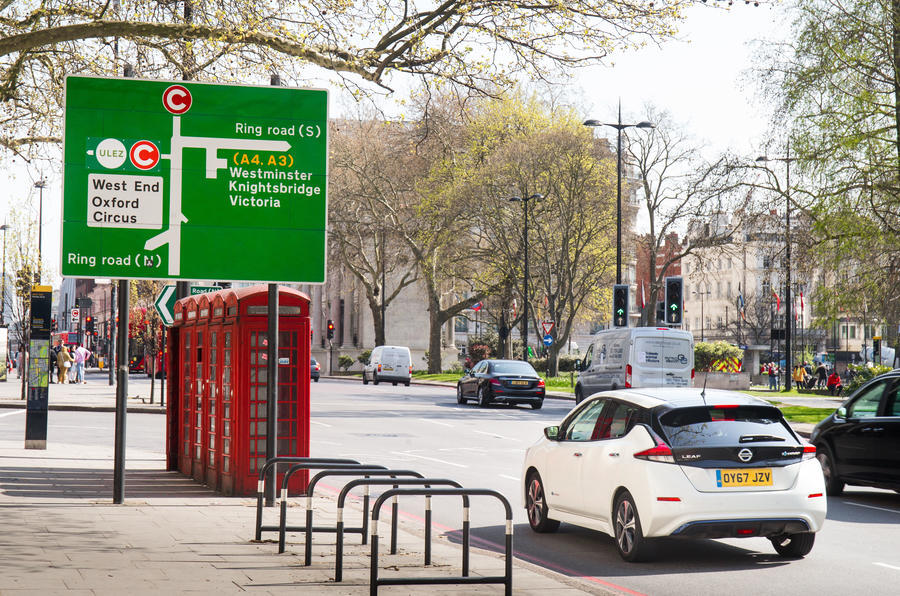
The basic premise of a CAZ is to discourage motorists from driving highly polluting vehicles into populated areas.
An area is marked out within a city, usually focused on population centres, such as a high street. Vehicles travelling within this zone and judged to be excessively polluting face charges, depending on the size of the vehicle.
Larger vehicles like lorries, coaches and buses that don't meet emissions requirements (explained in more detail below) are charged around £100, although this varies between cities.
Private hire cars, taxis and regular passenger vehicles that aren't compliant can expect to pay less but still incur a charge of around £10 a day.
Like London’s ULEZ, CAZs will be distinguished by signs to make motorists aware that they're entering the zone. They will also be ringfenced by numberplate-recognition cameras. These make a note of every vehicle that passes through the zone and checks them against a database to determine the charge.
Most CAZs will be in effect for 24 hours a day, seven days a week. No reprieve is granted for bank holidays.
How to pay ULEZ or other clean air zone charges
If you've driven into a CAZ (or if you plan to in the future), you will need to pay online or over the phone.
You will typically need the registration of the vehicle that has entered the zone, your name, address and email address and a method of payment.
The process should only take a few minutes, but some authorities have better payment platforms than others.
Entry into some CAZs, including those in Bath, Birmingham, Bradford, Bristol, Portsmouth, Sheffield and Tyneside, is paid for through the government’s own website at gov.uk/clean-air-zones.
Is my car exempt from the ULEZ and other clean air zones?
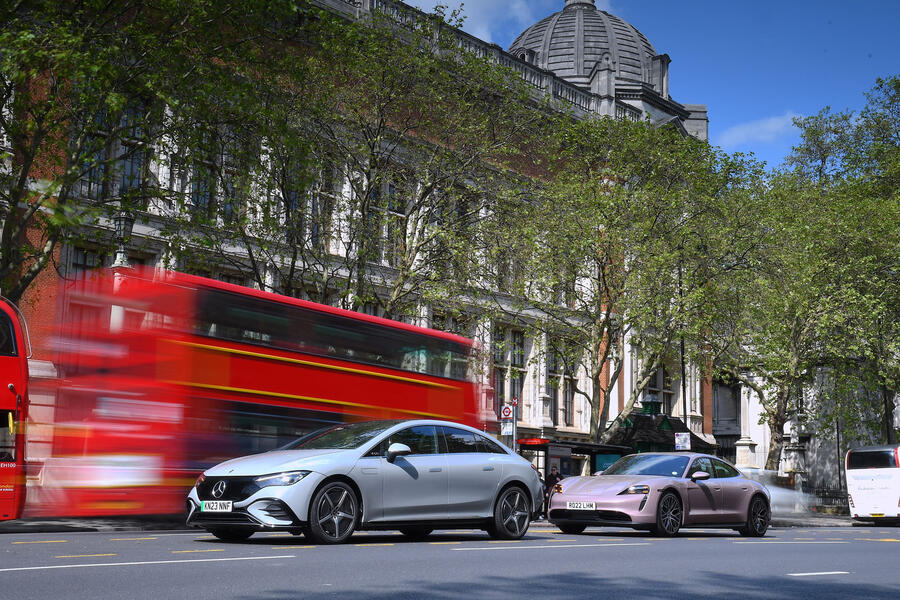
Since the goal of CAZs is to reduce emissions and improve air quality, drivers of vehicles with zero tailpipe emissions, such as electric cars, have nothing to fear. However, drivers of vehicles that do emit pollutants may be liable for charges.
Two factors determine whether you will face a charge and at what level: how many emissions your vehicle produces and what type it is. Depending on the CAZ class, certain types of vehicles are exempt.
The general rule is that to travel within a CAZ without a charge, a petrol vehicle has to meet at least the Euro 4 emission standard (mandatory from January 2006) and a diesel vehicle has to meet at least Euro 6 standards (mandatory from September 2015). If your vehicle meets these standards, you won't have to pay a charge.
For some zones, such as the London ULEZ, your vehicle simply has to meet the NOx and PM standards set by Euro 4 (for petrol vehicles) or Euro 6 (for diesels).
The Mk7 Volkswagen Golf GTD, produced between 2013 and 2020, is compliant with the ULEZ despite predating the Euro 6 standard. This is because it emits fewer than 0.08g/km of NOx and 0.0045g/km of PM.
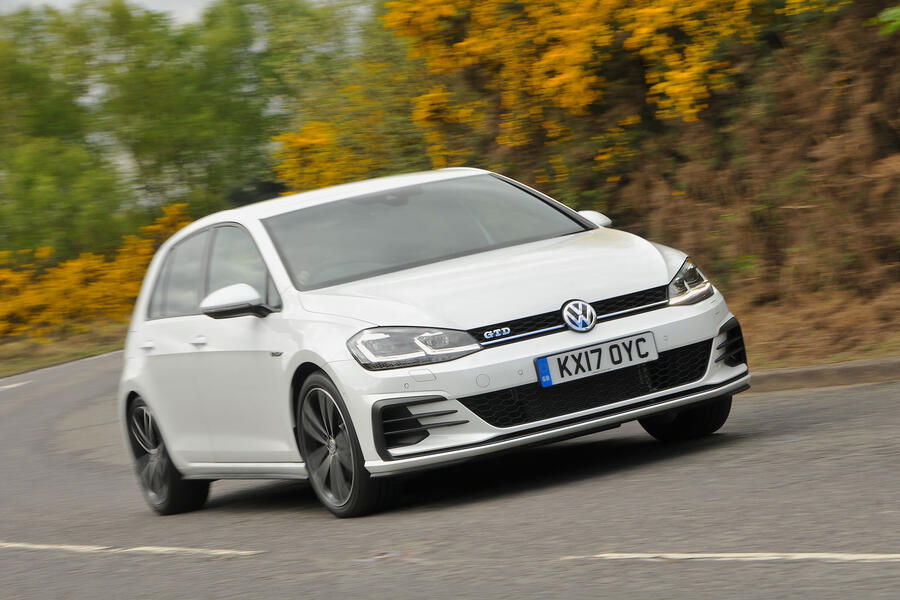
Some cars that significantly predate the introduction of these emissions standards also meet the requirements.
However, you will need to obtain a certificate of compliance (CoC) from its manufacturer to register it as ULEZ- or CAZ-compliant.
However, even if your vehicle does fall outside of Euro 4 or Euro 6, you might still be able to avoid a charge, depending on what kind of vehicle it is and the type of CAZ that you wish to drive through.
Four types of CAZ exist, each of which targets different classes of vehicles. These are:
Class A, which targets buses, coaches, taxis and private hire vehicles (PHVs).
Class B, which targets buses, coaches, taxis, PHVs and heavy goods vehicles (HGVs),
Class C, which targets buses, coaches, taxis, PHVs, HGVs and light goods vehicles (LGVs),
Class D, which targets buses, coaches, taxis, PHVs, HGVs, LGVs and cars.
Most of the CAZs that are scheduled to be introduced in the UK are Class D, but cities such as Bath and Portsmouth will be Class C, so regular car drivers won't have to pay.
Are disabled people exempt from clean air zone charges?
Currently exemptions for drivers with disabilities are set at a national level. That means that disabled passenger tax-class vehicles and disabled tax-class vehicles are exempt from all zones. However, discounts and exemptions for Blue Badge holders vary from area to area.
Either way, you will need to apply for exemption well in advance of entering the CAZ to allow your paperwork to be processed, else you will have to pay in the usual way or face a fine.
Which cities are introducing CAZs?
An increasing number of towns are considering introducing their own clean air zones. These include:
Basildon clean air zone: Plans for a clean air zone were abandoned on the basis of the time it would take to introduce one. Instead, a 50mph speed limit was introduced on part of the A127Â to reduce emissions.
Caerphilly clean air zone: A total HGV ban is under consideration, with a clean air zone on the A472 at Hafodyrynys Hill.
Cambridge clean air zone: A clean air zone within the current Air Quality Management Area is under consideration. This could include the historic centre as well as the inner ring road.
Canterbury clean air zone: Canterbury is planning other measures to combat emissions. These include anti-idling measures and incentives for taxi and bus companies to switch to low-emission vehicles.
Cardiff clean air zone: Cardiff favours the introduction of a £2-per-day congestion charge for non-residents over a CAZ.
Coventry clean air zone: Rather than a clean air zone, the government has accepted Coventry's targeted road improvement schemes and planned introduction of a number of cycle lanes.
Derby clean air zone: Like Coventry, Derby is proposing a range of road improvements and cycle schemes. Derby opposes the introduction of a CAZ.
Exeter clean air zone: Opposed by the city council, Exeter favours measures to increase the use of public transport over restricting access to certain vehicles.
Leeds clean air zone: Leeds no longer requires a CAZ due to a shift to low-emission vehicles. It found that more than 80% of buses and HGVs were powered by Euro 6 engines, and therefore would be exempt anyway.
Leicester clean air zone: Like Leeds, Leicester no longer requires a CAZ following air quality improvements.
Liverpool clean air zone: Abandoned after the mooted Greater Manchester CAZ raised concerns over the affordability of cleaner vehicles and the speed at which non-compliant vehicles could be replaced.
Manchester clean air zone: CAZ rejected in favour of investing in cleaner buses and taxis, which is believed to reduce toxic emissions more quickly and effectively.
Nottingham clean air zone: The city doesn't require a CAZ following plans to reduce emissions from buses, taxis and the council fleet.
Southampton clean air zone: A non-charging CAZ has been running since 2017Â and there are no plans to make it chargeable following a raft of measures concerning taxis, buses, HGVs and emissions from the port.
Sefton clean air zone: Merseyside town is considering introducing a CAZ targeting HGVs.
St Albans clean air zone: A CAZ is under consideration but is expected to major on anti-idling measures, rather than a chargeable clean air zone.
Warrington clean air zone: The council has adopted a five-year pollution reduction plan, but a CAZ is no longer planned.
Wokingham clean air zone: Emission reductions are targeted in two areas following an air quality plan, but a CAZ has been ruled out.Â
Which cities have clean air zones?
Aberdeen clean air zone
Live since: May 30 2022 but will be enforced from 1 June 2024
Zone type: Class C
Cost per day for HGVs, buses and coaches: £60
Cost per day for taxis: UnknownÂ
Cost per day for regular passenger cars: £60Â
Official website:Â aberdeencity.gov.uk
Aberdeen was the second Scottish city to gain a clean air zone, which came into place from May 2022. A major chunk of the city centre is covered by the zone, but the city council’s research suggests that some areas of pollution will remain even with a LEZ zone in place, unless further traffic reduction measures are introduced. The council will seek to implement changes to roads in the city centre to prioritise people walking, wheeling, cycling and using public transport. Blue badge holders are exempt from this charge, as with all other Scottish cities.
Bath clean air zone
Live since: 15 March 2021
Zone type: Class C
Cost per day for HGVs, buses and coaches: £100
Cost per day for taxis: £9
Cost per day for regular passenger cars: £0
Official website: bathnes.gov.uk
The UK’s first Clean Air Zone (CAZ) outside of London was introduced in Bath. Costing £23 million to implement, the scheme introduced a large Class C zone, encompassing Bath city centre, Kingsmead, Walcot, Bathwick and the Royal Victoria Park. The zone’s Class C status means that HGVs, buses, coaches and taxis are charged to enter the zone if they're judged to be polluting (so are either pre-Euro 6 diesel vehicles or pre-Euro 4 petrol vehicles), but regular passenger cars used for private use can still drive through and within the zone normally without incurring a fee. For drivers that fall foul of the CAZ, the charge differs depending on vehicle type. HGVs, coaches and buses will incur a charge of £100 a day to enter the zone, whereas taxis will be charged only £9.
Birmingham clean air zone

Live since: 1 June 2021
Zone type: Class D
Cost per day for HGVs, buses and coaches: £50
Cost per day for taxis: £8
Cost per day for regular passenger cars: £8
Official website: birmingham.gov.uk
Birmingham was originally supposed to gain a CAZ in 2020, but the launch date was pushed back to summer 2021, due to the Covid pandemic. The CAZ spans all roads within Birmingham’s A4540 Middleway Ring Road, exempting the ring road itself, and is a Class D zone. This means that, unlike Bath’s Class C zone, regular passenger car drivers can incur charges for using the zone, alongside HGV, bus, coach and taxi drivers. Compared with Bath, however, the CAZ is smaller.
The charges will be lower, too. HGVs, buses and coaches will have to pay £50 a day to use the zone. For all other vehicles, the charge is reduced to £8. Vehicles with a disabled passenger tax class are permanently exempt from the CAZ, as are historic vehicles over 40 years old, motorcycles and school buses. Further, temporary exemptions are available for residents, who will be exempt for two years before they have to pay, and people on low incomes, who get a one-year exemption before paying. In contrast to other CAZs, Birmingham won't give an exemption for Blue Badge holders.
The zone is operational for 24 hours a day, seven days a week, including bank holidays.
Bradford clean air zone
Live since: September 2022
Zone type: Class C
Cost per day for HGVs, buses and coaches: £50
Cost per day for taxis: £7 (LGVs and minibuses £9)
Cost per day for regular passenger cars: £0
Official website: bradford.gov.uk
A CAZ in Bradford's centre and surrounding areas has been live since September 2022. HGVs, buses and coaches that aren't Euro 6-compliant are charged £50 a day to enter the zone, which runs 24/7, while LGVs and minibuses are charged £9. Taxis and private hire vehicles pay a middling £7 per day if they can't meet emissions standards while regular passenger car drivers avoid fees. Alongside the zone, Bradford City Council will also take measures to encourage taxis to change to plug-in hybrids and electric cars. An electric bus roll-out is also planned, including the creation of 1000 park-and-ride routes.
Bristol clean air zone
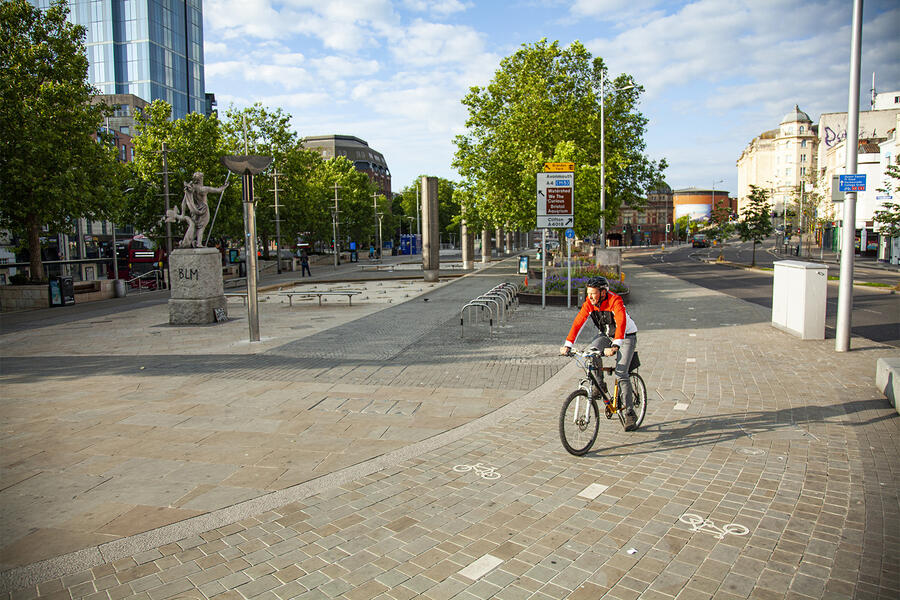
Live since: 28 November 2022
Zone type: Class D
Cost per day for HGVs, buses and coaches: £100
Cost per day for taxis: £9
Cost per day for regular passenger cars: £9
Official website: bristol.gov.uk
Bristol's zone covers a relatively small area but restricts both older, more polluting private cars and commercial vehicles. The zone, operating at all times, including bank holidays, comprises a relatively small area, spanning Bristol centre to Temple Quay and the immediate surroundings. Non-compliant LGVs, buses, coaches and taxis as well as non-compliant private vehicles incur charges for entering the zone.
The charges are set at £100 per day for larger vehicles and £9 per day for private ones. However, several exemptions to the charge are in place. People who already live within the CAZ won't have to pay a charge for at least a year after the date it was implemented, nor will Bristol-based Blue Badge holders or low-income drivers who have to enter the zone for work. Vehicles visiting hospitals in the zone also dodge the charge, as do vehicles with disabled tax status.
Dundee clean air zone
Live since: 24 May 2022
Zone type: Class D
Cost per day for HGVs, buses and coaches: £60
Cost per day for taxis: UnknownÂ
Cost per day for regular passenger cars: £60
Official website: dundeecity.gov.uk
Dundee was the first Scottish town to receive a CAZ when plans came into effect on 24 May 2022. The zone is positioned inside the city’s inner ring road, with access granted only to certain types of vehicles. A two-year grace period was given for both residents and non-residents of the zone, as well as non-exempt vehicle types, meaning full enforcement will begin on 30 May 2024.Â
Edinburgh clean air zone
Live since: 31 May 2022 but will be enforced from 1 June 2024
Zone type: Class C
Cost per day for HGVs, buses and coaches: £60
Cost per day for taxis: UnknownÂ
Cost per day for regular passenger cars: £60
Official website: edinburgh.gov.uk
Edinburgh followed Dundee by a few days with the introduction of its own CAZ. The proposed scheme has all non-Euro 6 compliant diesel vehicles banned from the city centre from May 2022, along with all petrol vehicles that don't meet Euro 4 emissions standards. This includes passenger cars, as well as buses and HGVs. While the daily costs for such vehicles to use the zone have not yet been revealed, the City of Edinburgh Council, which is coordinating the zone, has said that drivers who flout the rules will be fined £60. Repeat offences, within a 90-day stretch, will cause the fine to roughly double. However, fines aren't expected to start until 2024.Â
Glasgow clean air zoneÂ
Live since: 1 June 2023
Zone type: Class D
Cost per day for HGVs, buses and coaches: £60
Cost per day for taxis: Unknown
Cost per day for regular passenger cars: £60
Official website: glasgow.gov.uk
Glasgow is the latest Scottish city to introduce a CAZ, with all petrol vehicles that comply with Euro 4 emissions standards, diesel cars complying with Euro 6 standards and fully electric cars exempt from its daily charges. The zone operates 24 hours a day on every day of the year and is enforced using ANPR cameras. Penalty rates double for repeated entries and are capped at £480 for cars and £960 for buses and HGVs. Glasgow's zone covers the city centre only and doesn't stretch further north or west than the M8 motorway (which itself is exempt), further south than the River Clyde or further east than High Street in the Merchant City.Â
London Low Emission Zone
Live since: April 2019
Zone type: ULEZ
Cost per day for HGVs, buses and coaches: £100
Cost per day for taxis: £12.50
Cost per day for regular passenger cars: £12.50
Official website: tfl.gov.uk
As the UK’s largest city, London has historically been at the forefront of green innovation. It's therefore no surprise that the city has continued to tighten regulations around driving.
The Ultra Low Emission Zone (ULEZ) was expanded to include all London boroughs – but not the M25 motorway – on 29 August 2023, following the original ULEZ roll-out in April 2019.
Cars, vans and motorcycles that don't meet Euro 4 or Euro 6 (depending on the type of vehicle) emissions standards incur a £12.50 charge. Buses and coaches need to pay £100 to enter the zone, unless they fall into a disabled or disabled passenger vehicle tax class. Hybrid cars aren't exempt from ULEZ fees if their engines aren't Euro 4 compliant, although most modern hybrids already meet Euro 4, 5 or 6 standards. The fine for those who don't pay is £180.Â
The zone includes the Lee Valley regional park in the north and Biggin Hill in the south, moving westerly to West Drayton and easterly to North Ockendon. It operates 24 hours a day every day of the year, except Christmas Day. There is a ULEZ scrappage scheme for drivers living within the zone, with grants of up to £2000 available. The funds are designed to reduce the cost of replacing a non-compliant model and are now available to all London residents, having previously been means-tested.
Plans for a zero-emission zone (ZEZ), which would charge motorists to drive any petrol or diesel car into the city centre, have been shelved following the expansion of the ULEZ.
A ZEZ was trialled on Beech Street (next to the Barbican Centre) between March 2020 and September 2021, but the City of London corporation decided in July 2023 not to make it permanent. It noted in its final report on the Beech Street ZEZ that support for it was divided and that many of those who opposed its renewal didn't believe that it sufficiently reduced traffic, nor that it significantly improved air quality.
Oxford clean air zone

Live since: 28 February 2022
Zone type: Zero emission zone (ZEZ)
Cost per day for HGVs, buses and coaches: £2, £4 or £10
Cost per day for taxis: £2, £4 or £10
Cost per day for regular passenger cars: £2, £4 or £10
Official website: oxfordshire.gov.uk
Oxford technically has a ZEZ. First proposed in 2015, a pilot scheme for the zone encompasses a handful of streets in Oxford’s city centre, including St Michael’s Street and New Inn Hall Street. The zone is less punishing than most other CAZs. It isn't, for instance, operational 24/7, instead being active only between 7am and 7pm, although it is in place every day. Charges are much lower than in every other city.
Zero-emission vehicles are able to use the zone free of charge, but other vehicles are charged between £2 and £10 a day to enter the area. Vehicles that emit less than 75g/km of CO2 incur a £2 charge, rising to £4 in August 2025. Drivers of vehicles that use either Euro 4 petrol motors or Euro 6 diesels are charged £4 (rising to £8). For more polluting vehicles, the charge is £10 (rising to £20). Discounts on the charges are available to those already living within the zone, business vehicles, Blue Badge holders and vehicles with a disabled tax class.
Portsmouth clean air zone
Live since: 29 November 2021
Zone type: Class B
Cost per day for HGVs, buses and coaches: £50
Cost per day for taxis: £10
Cost per day for regular passenger cars: £0
Official website: cleanerairportsmouth.co.uk
Portsmouth’s CAZ stretches from where the M275 meets the city, down Kingston Road and Fratton Road to Gunwharf Quays and back up to the M275, encompassing Portsmouth University, the city’s main shopping centre and the harbour. Non-compliant HGVs, buses and coaches are charged £50 to enter the zone, falling to £10 for non-compliant taxis and private hire vehicles. Vehicles with a disabled tax class and military vehicles are exempt from the charge.
Private passenger cars, vans and motorcycles aren't currently charged to enter the Portsmouth CAZ, regardless of their age.
Tyneside clean air zone (including Gateshead and Newcastle)
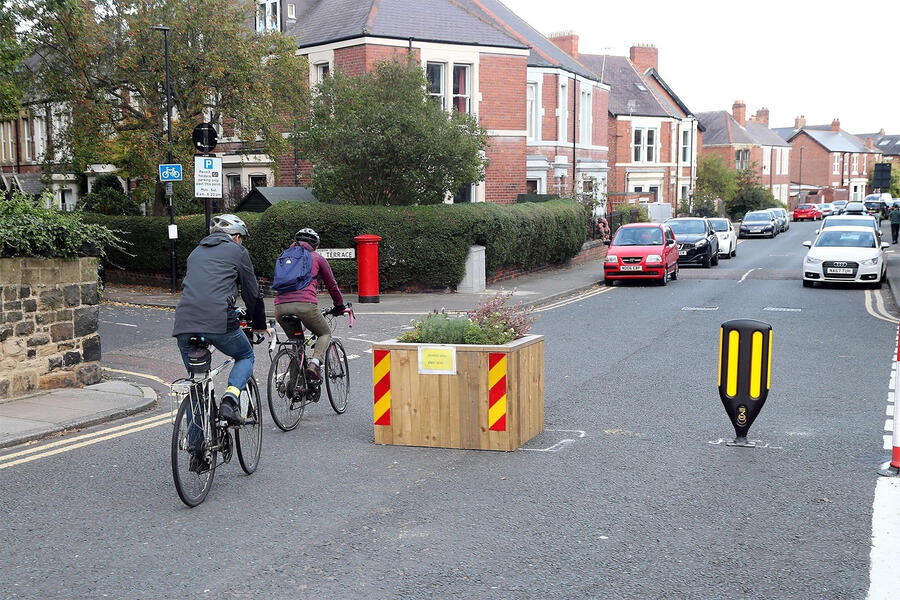
Live since: January 2023
Zone type: Class C
Cost per day for HGVs, buses and coaches: £50Â
Cost per day for taxis: £12.50, vans also £12.50Â
Cost per day for regular passenger cars: £0
Official website: breathe-cleanair.com
Newcastle was originally set to launch a CAZ in January 2021. However, the plan was pushed back, due to a combination of the government being “ill-prepared†(according to Newcastle Council cabinet member Arlene Ainsley) and the fallout from an ongoing legal challenge by a company that lost its bid to provide ANPR cameras to police the zone. The city's CAZ was eventually launched on 30 January 2023.
Focused on the city centre, it's Class C, so doesn't affect regular passenger cars. HGVs, buses and coaches are charged £50 to enter the city centre, with taxis, vans and other private hire vehicles paying £12.50.
Sheffield clean air zone
Live since: 27 February 2023
Zone type: Class C
Cost per day for HGVs, buses and coaches: £50
Cost per day for taxis: £10, vans and LGVs also £10
Cost per day for regular passenger cars: £0
Official website: sheffield.gov.uk
Sheffield’s CAZ was set to be introduced towards the end of 2021, but the effect of the pandemic on air pollution (it dropped by a third from 2019 levels) caused city councillors to delay its introduction.
As it's Class C, the zone overlooks regular passenger traffic but penalises polluting HGVs, coaches and taxis.
It covers Sheffield’s inner ring road and city centre, including Park Square. Non-compliant HGVs and buses are charged £50 for entry, falling to £10 for taxis, vans and lorries.
Additional reporting by Charlie Martin
